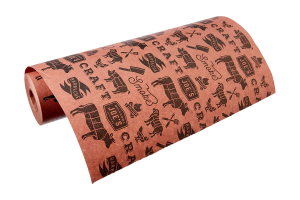Introduction
Whether you’re a new driver or someone who’s been behind the wheel for years, auto insurance is something you can’t ignore. It’s more than just a legal requirement—it’s a financial safety net that protects you, your vehicle, and others on the road. In this comprehensive guide, we’ll explain everything you need to know about auto insurance, including its types, benefits, how it works, and how to choose the right policy for your needs.

What is Auto Insurance?
Auto insurance is a contract between you and an insurance company that protects you against financial loss in case of an accident, theft, or other damage involving your vehicle. You pay a premium, and in return, the insurer agrees to cover your losses as defined in the policy.
In most countries, having at least a basic level of auto insurance is mandatory by law. It ensures that if you cause harm or damage while driving, the victim can receive compensation without going through complex legal procedures.
Why Auto Insurance is Important
- Legal Requirement
In many countries, driving without insurance is illegal and may lead to heavy fines, license suspension, or even imprisonment. - Financial Protection
Accidents can lead to expensive repairs or medical bills. Insurance saves you from paying these costs out-of-pocket. - Peace of Mind
Knowing you’re covered in case of an unexpected event helps you drive with confidence. - Third-Party Protection
If you’re responsible for an accident, insurance covers the damages or injuries caused to others.
Types of Auto Insurance
Understanding the different types of auto insurance is crucial for choosing the right coverage. Here’s a breakdown of the most common types:
1. Third-Party Liability Insurance
This is the most basic and usually the minimum required by law. It covers:
- Damage to someone else’s vehicle or property
- Injury or death of another person
It does not cover damage to your own vehicle.
2. Comprehensive Insurance
A more inclusive policy that covers:
- Damage to your own vehicle (regardless of who’s at fault)
- Theft
- Natural disasters (floods, storms, earthquakes)
- Vandalism or fire
- Third-party liability
3. Collision Coverage
Pays for damages to your car due to a collision with another vehicle or object, regardless of fault. Usually optional if you already have comprehensive insurance.
4. Personal Injury Protection (PIP)
Covers medical expenses for you and your passengers after an accident, regardless of fault. Some policies also cover lost wages.
5. Uninsured/Underinsured Motorist Coverage
Protects you if you’re involved in an accident with a driver who doesn’t have insurance or whose coverage is insufficient.
How Auto Insurance Works
When you buy an insurance policy, you’re essentially purchasing protection. Here’s how it works in simple steps:
- You Choose a Policy:
Select the type and level of coverage you want based on your needs and budget. - You Pay a Premium:
This could be monthly, quarterly, or annually. - In Case of an Accident or Theft:
You file a claim with your insurance company. - Claim Assessment:
The insurance company assesses the damage or loss. - Payout or Repair:
If approved, they either pay for repairs, replace your vehicle, or compensate third parties.
What Affects Your Premium?
Several factors determine how much you pay for auto insurance:
- Age and Gender
Young and inexperienced drivers usually pay more. - Location
Living in an area with high accident or theft rates can raise your premium. - Vehicle Type
Expensive or high-performance cars cost more to insure. - Driving History
Clean record = lower premiums. Accidents or tickets = higher rates. - Coverage Level
More coverage = higher premium. - Claims History
Frequent claims may mark you as a high-risk driver.
Common Auto Insurance Add-ons (Optional Covers)
- Roadside Assistance
Covers towing, flat tires, battery jump-starts, and fuel delivery. - Zero Depreciation Cover
Ensures you get the full value of replaced parts without considering depreciation. - Engine Protection
Especially useful in flood-prone areas, this covers non-accidental engine damage. - No Claim Bonus (NCB) Protection
Keeps your discount intact even after a claim.
How to Choose the Right Auto Insurance
- Assess Your Needs
Consider your driving habits, vehicle type, and financial situation. - Compare Policies
Don’t settle for the first option. Use comparison websites or consult brokers. - Check Claim Settlement Ratio
A high ratio indicates that the insurer settles most of its claims—good for peace of mind. - Read the Fine Print
Understand exclusions, claim limits, and terms. - Look for Discounts
Many insurers offer discounts for safe driving, bundling policies, or installing anti-theft devices.
Claim Process – Step-by-Step
- Inform the Insurer Immediately
Report the incident within 24–48 hours. - File an FIR (if required)
Especially in case of theft or major accidents. - Submit Required Documents
Policy copy, driving license, registration certificate, photos of damage, FIR, etc. - Inspection & Survey
The insurer sends a surveyor to assess the damage. - Repair or Settlement
Either the insurer pays directly to the garage (cashless claim) or reimburses you after submission of bills.
Frequently Asked Questions (FAQs)
Q1: Is auto insurance mandatory?
Yes, in most countries third-party liability insurance is legally required.
Q2: Can I transfer my No Claim Bonus to a new car?
Yes, NCB is linked to the policyholder, not the vehicle.
Q3: Will my insurance cover floods or earthquakes?
Only if you have comprehensive insurance with natural disaster coverage.
Q4: What is IDV (Insured Declared Value)?
It’s the maximum amount the insurer will pay in case your car is stolen or totally damaged.
Q5: Can I switch insurers mid-policy?
Usually no, but you can at the time of renewal without losing benefits like NCB.

Conclusion
Auto insurance isn’t just a regulatory formality—it’s a smart financial move that protects you, your loved ones, and your investment in your vehicle. With a wide range of options and customizations, finding the right policy has never been easier. Whether you opt for basic third-party coverage or a full comprehensive plan with all the add-ons, make sure you stay informed and choose wiselyA little research today can save you a lot of money, stress, and legal hassle tomorrow. Drive safe—and stay insured!










